INTERNACIONAL
En su peor momento político, Pedro Sánchez ahora se enfrenta con Donald Trump, que amenaza a España con una guerra comercial
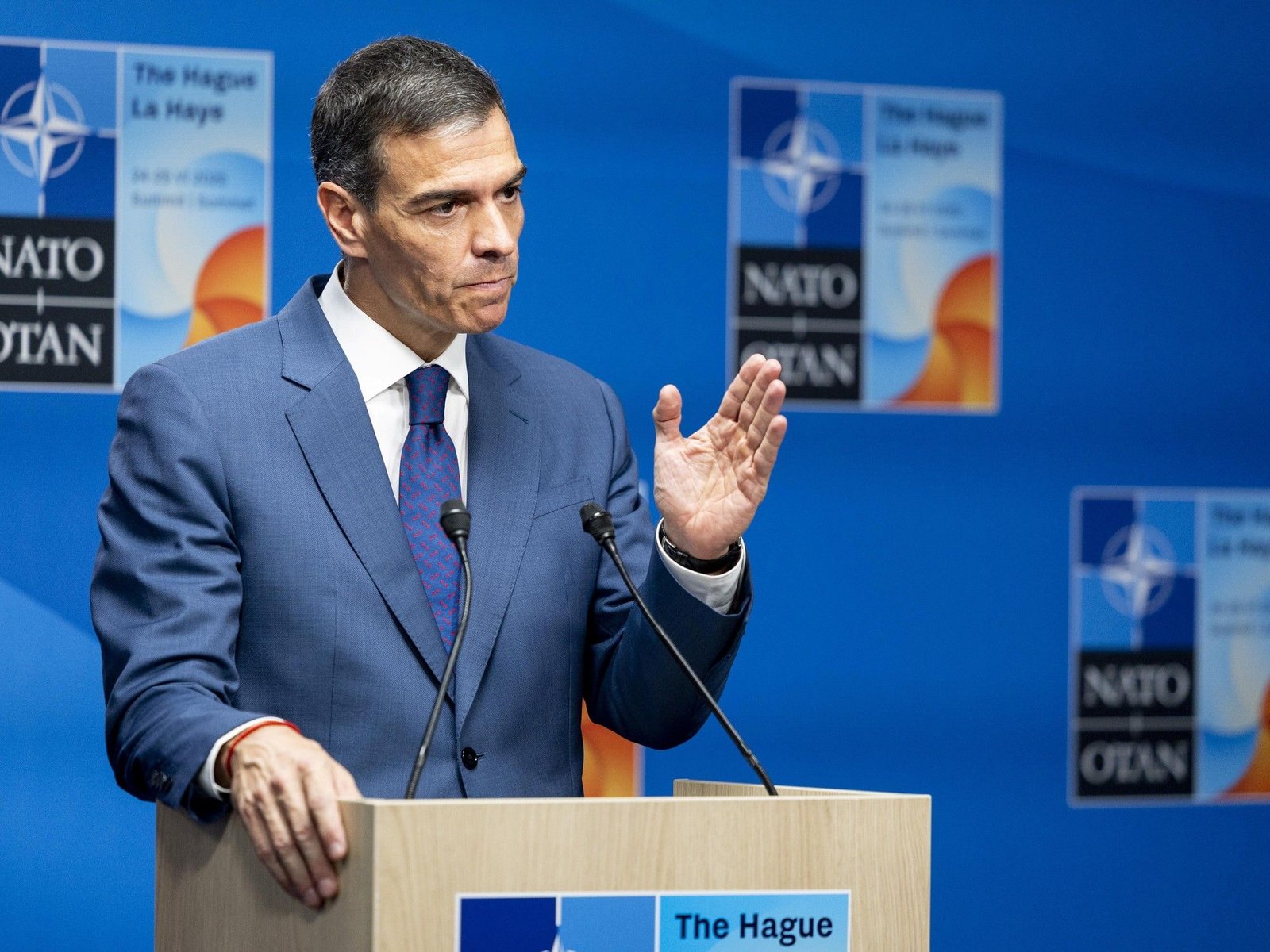
INTERNACIONAL
Supreme Court sides against migrant in deportation case

NEWYou can now listen to Fox News articles!
The Supreme Court installed a tighter timeline for removable migrants to challenge their deportations as part of its decision on Thursday in a case involving a Jamaican immigrant who had tried to avoid being sent back to his home country.
The Supreme Court found that once migrants receive a final order of removal, a 30-day window for them to seek review of that order is triggered.
The ruling was roughly 5-4, with the three liberal justices dissenting and Justice Neil Gorsuch joining most of the dissent.
Pierre Riley, the Jamaican national at the center of the case, had followed the law and challenged his final removal order in the immigration court system. But when he attempted to seek review from the appellate court of the immigration court findings, the appellate court said its hands were tied because it had been more than a year since Riley had received his initial removal orders.
SUPREME COURT BLOCKS TRUMP EFFORT TO DEPORT VENEZUELAN MIGRANTS UNDER ALIEN ENEMIES ACT
A composite image shows illegal aliens aboard an ICE deportation flight and a detainee being escorted onto the aircraft by ICE agents, June 3, 2025. The high-risk charter flight was led by ICE ERO Dallas. (ERO Dallas)
Riley came to the United States on a six-month visa three decades ago. He never left, was arrested and convicted of drug felonies, and served in prison until 2021.
Immigration and Customs Enforcement moved to deport him to Jamaica in January that year, kicking off the weedy legal process involving Riley challenging his removal.
The chain of events that ensued showcases how migrants facing removal can end up going down a windy due process road in the immigration and federal courts.
In this case, Riley had 10 days under the law to challenge his removal in an immigration court, and he did. He argued that although he was removable, returning to Jamaica would put his life at risk because a drug kingpin there had killed two of his cousins and would likely go after him, too.
Riley invoked what is known as a «convention against torture» rule, which migrants can use to contest being deported to their home country.
An immigration judge, who is an administrative judge working within the Department of Justice, granted Riley «withholding of removal» to Jamaica, meaning he could be deported, just not to Jamaica.
GORSUCH, ROBERTS SIDE WITH LEFT-LEANING SUPREME COURT JUSTICES IN IMMIGRATION RULING
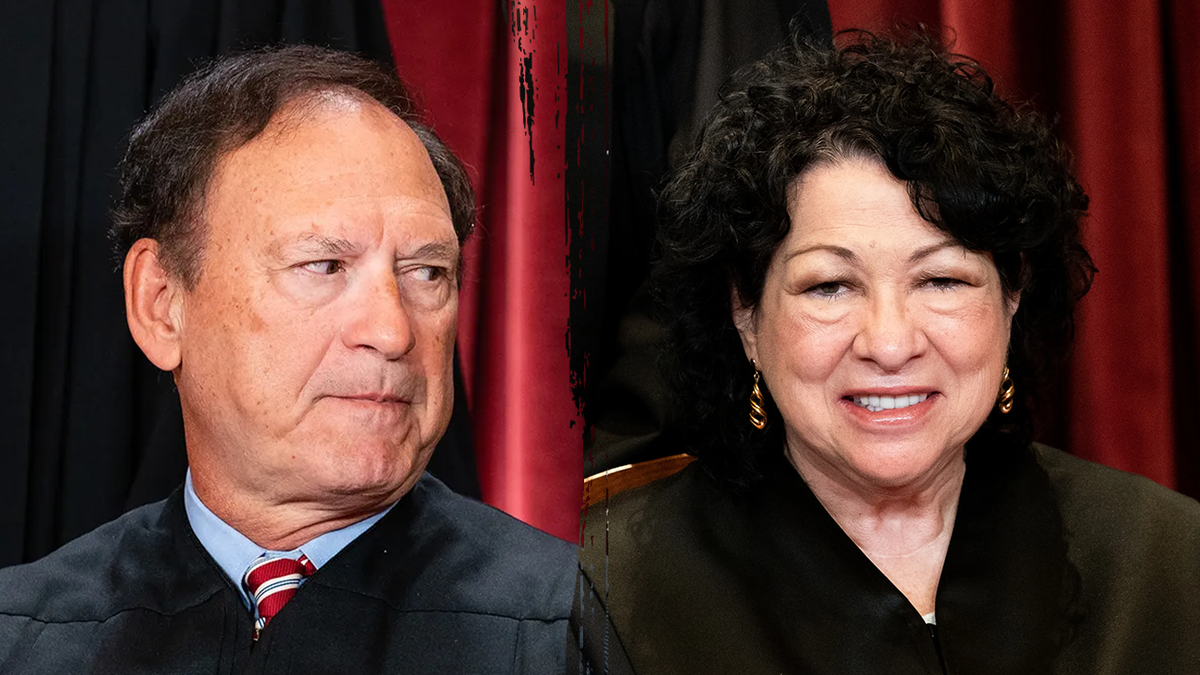
Justices Samuel Alito and Sonia Sotomayor. (Getty)
The government appealed the immigration ruling to the Board of Immigration Appeals, which overturned the immigration judge’s finding, meaning Riley could once again be deported to Jamaica.
Migrants’ next avenue of appeal is to ask a federal circuit court to review their deportation order, and Riley did this.
But upon reviewing Riley’s case, the appellate court found Riley was too late. The appellate court said that it had no jurisdiction to help him because the original removal orders he received in January 2021 are what set off a 30-day deadline to seek review of his deportation.
Writing for the majority, Justice Samuel Alito acknowledged the «legitimate practical concerns» of Riley’s case but said the law assumed immigration cases would be handled expeditiously and that the 30-day deadline being triggered right at the time a migrant is ordered removed should, in theory, be a non-issue.
«The Government reminds us that such proceedings have often lasted many months and even years. . . . That is surely not what Congress anticipated when it enacted the streamlined procedure,» Alito wrote in a footnote.
Attorney Dilan Esper noted on X that Thursday’s order could shed light on a recent controversial emergency order the Supreme Court issued this week that cleared the way for the Trump administration to deport migrants, including a group of men bound for South Sudan, to countries they are not from.
CLICK HERE TO GET THE FOX NEWS APP
The order on Thursday indicated that the law does not offer a clear avenue for migrants to raise convention against torture claims for third countries after they receive final removal orders.
Justice Sonia Sotomayor said in her dissent the majority opinion in Riley’s case did not make logistical sense.
«In holding that Riley was required to file his appeal 16 months before the order he sought to challenge existed, the court surely moves from the border well into the heartland of illogic and absurdity,» Sotomayor wrote.
INTERNACIONAL
Iran’s supreme leader slams Trump just days after US strikes on nuclear sites

NEWYou can now listen to Fox News articles!
The ceasefire between Israel and Iran did not stop Iranian Supreme Leader Ayatollah Ali Khamenei from firing off a post on X, slamming President Donald Trump.
«The U.S. president stated, ‘Iran must surrender.’ Needless to say, this statement is too big to come out of the U.S. president’s mouth,» Khamenei wrote.
On June 17, a few days before the U.S. carried out the strikes on Iran’s nuclear facilities, Trump took to Truth Social to demand an «unconditional surrender» from Tehran. In a separate message on the same day, Trump said the U.S. had «complete and total control of the skies over Iran.»
Trump also took a swipe at Khamenei himself, saying that the U.S. knew where the Iranian leader was hiding.
«We know exactly where the so-called ‘Supreme Leader’ is hiding,» Trump wrote. «He is an easy target, but is safe there — we are not going to take him out (kill!), at least not for now. But we don’t want missiles shot at civilians, or American soldiers. Our patience is wearing thin.»
Iran’s Supreme Leader Ayatollah Ali Khamenei speaks in a televised message, after the ceasefire between Iran and Israel, in Tehran, Iran, Jun. 26, 2025. (Office of the Iranian Supreme Leader/WANA (West Asia News Agency)/Handout via Reuters)
THE MISSING MULLAH: IRAN’S ‘SUPREME LEADER’ A NO-SHOW FOR NEGOTIATIONS, THEN HID AS US POUNDED NUKE SITES
«Under President Trump’s leadership, Operation Midnight Hammer was executed perfectly — obliterating Iran’s nuclear capabilities and bringing them to the table for a ceasefire. This historic outcome was only possible because of America’s military might and the strength of our Commander in Chief,» White House Deputy Press Secretary Anna Kelly told Fox News Digital.
Khamenei’s remarks appeared aimed more at projecting strength than reflecting reality.
Following Iran’s attack on Al-Udeid, the American airbase in Qatar, Khamenei bragged that Iran «delivered a heavy slap to the U.S.’s face.» However, Trump called it a «very weak response» before revealing that Iran gave the U.S. «early notice» of its planned retaliation.
«Iran has officially responded to our obliteration of their nuclear facilities with a very weak response, which we expected, and have very effectively countered. There have been 14 missiles fired — 13 were knocked down, and 1 was ‘set free,’ because it was headed in a nonthreatening direction. I am pleased to report that NO Americans were harmed, and hardly any damage was done,» Trump wrote. «I want to thank Iran for giving us early notice, which made it possible for no lives to be lost, and nobody to be injured.»
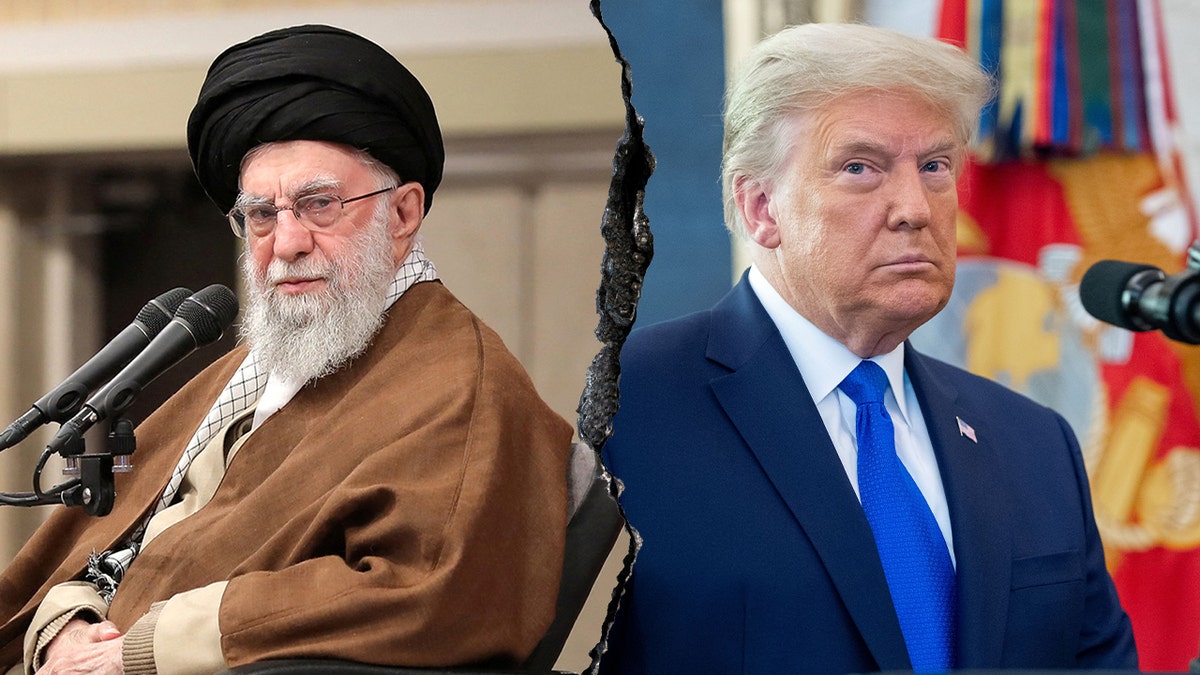
Iran’s supreme leader Ali Khamenei and President Donald Trump consider direct military engagement. Apr. 1, 2025 (Khamenei: West Asia News Agency, Reuters; Trump: SAUL LOEB/AFP via Getty Images)
FRONTRUNNERS EMERGE AS IRANIAN OFFICIALS DISCUSS POSSIBLE SUCCESSORS TO KHAMENEI: REPORT
Since Israel launched its operation against Iran, Khamenei has been in hiding and, according to Reuters, his family is being guarded by the Vali-ye Amr special forces unit of Iran’s Revolutionary Guard Corps. Some believed — and even hoped — that the end of the nuclear program would also mean the end of the Islamic Republic’s rule; however, reports of an internal security crackdown have made the possibility of regime change seem less likely.
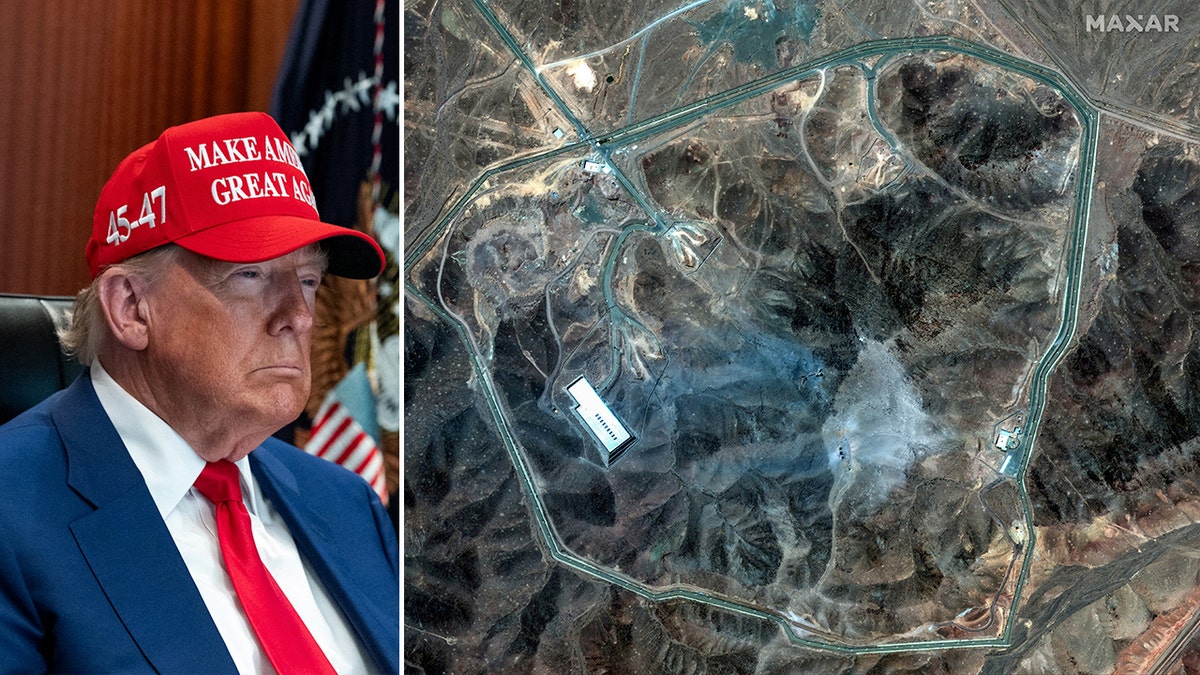
President Donald Trump is shown in the Situation Room next to an image of the damage done to Iran’s Fordow nuclear facility on Jun. 21, 2025. (The White House; Maxar Technologies via Reuters)
CLICK HERE TO GET THE FOX NEWS APP
The regime is reportedly carrying out mass arrests and executions. The Human Rights Activists News Agency (HRANA) said Monday that 705 individuals had been arrested in Iran on «political or security-related charges.» Many of the charges involve allegations of espionage on behalf of Israel.
Three people have reportedly already been executed for allegedly spying on behalf of the Mossad, Israel’s equivalent of the CIA, NBC News reported, citing Tasnim, which is affiliated with the IRGC.
INTERNACIONAL
Así son las tres nuevas especies de ranas identificadas en una región remota de Perú

En la Cordillera de Huancabamba, al norte de Perú, un equipo de científicos descubrió tres nuevas especies de ranas terrestres. Este hallazgo, realizado entre 2021 y 2024, fue liderado por el herpetólogo Germán Chávez y publicado en la revista Evolutionary Systematics.
Las especies Pristimantis chinguelas, Pristimantis nunezcortezi y Pristimantis yonke amplían el conocimiento sobre la biodiversidad andina y destacan la fragilidad de los ecosistemas de montaña frente a amenazas ambientales.
“Estas ranas nos recuerdan cuánto nos falta por conocer de los Andes”, afirmó Chávez en un comunicado de prensa. Asimismo, el descubrimiento resalta la importancia de la Cordillera de Huancabamba como un refugio de especies únicas, según Wilmar Aznaran, coautor del estudio.
La Cordillera de Huancabamba, en el noroeste de Perú, es de difícil acceso debido a su terreno accidentado y clima variable. Aunque no supera los 4.000 metros de altitud, el escarpado relieve y las condiciones meteorológicas hacen que explorar la zona sea un reto. Desde la década de 1990, pocos científicos han trabajado allí, registrando 29 especies de anfibios, muchas de ellas endémicas.

Entre 2021 y 2024, el equipo de Chávez realizó expediciones nocturnas en localidades como el Cerro Chinguelas, la ruta a Laguna Negra y el Bosque de Ramos, en las provincias de Huancabamba y Ayabaca, en Piura. Durante las expediciones, que se realizaron en las estaciones de lluvias y sequía, recorrieron hasta seis horas por noche, utilizando linternas para rastrear los anfibios en diversos microhábitats.
Las tres especies descubiertas tienen características distintivas que se relacionan con su entorno.
Pristimantis chinguelas fue encontrada en un acantilado del Cerro Chinguelas, a 2.849 metros de altura. Es una rana de tamaño mediano, con un cuerpo cubierto de tubérculos y un canto agudo. Su color varía entre amarillo ocre y marrón castaño. Su nombre honra el lugar donde fue hallada.
Pristimantis nunezcortezi habita cerca de un arroyo, en un bosque en regeneración, a 2.593 metros de altura. Su color marrón rojizo con motas rojas y su vientre naranja la distinguen. Fue nombrada en honor al ornitólogo Elio Núñez-Cortez, pionero en la conservación de la región.

Pristimantis yonke, la más pequeña de las tres, se encontró en bromelias a casi 3.000 metros de altura. Su nombre hace referencia al “yonque”, un aguardiente tradicional para soportar el frío. Su color va del marrón oscuro al canela, con detalles en crema y amarillo en las extremidades. Esta especie parece estar especializada en las bromelias.
El género Pristimantis es el grupo de anfibios más diverso de América Latina, con 619 especies registradas. La taxonomía de este género es compleja debido a la gran variabilidad morfológica de las especies, algunas difíciles de diferenciar a simple vista.
Para describir las nuevas especies, el equipo utilizó un enfoque integrador que combinó análisis morfológicos, genéticos y bioacústicos. Los análisis genéticos mostraron que las especies difieren en más del 3% de sus parientes más cercanos, lo que confirma su distinción.
A pesar del descubrimiento, el futuro de estas ranas es incierto. Durante las expediciones, los científicos notaron la degradación de su hábitat por incendios y la expansión agrícola. Entre 2001 y 2023, se perdieron alrededor de 5.000 hectáreas de ecosistemas naturales, y los recientes incendios podrían haber afectado aún más los hábitats de estas especies.

Por ahora, las tres especies están clasificadas como “Datos Insuficientes” por la Unión Internacional para la Conservación de la Naturaleza (UICN), ya que no hay suficiente información sobre su distribución o tamaño poblacional. Cada especie ocupa áreas menores a 10 km² y se han encontrado pocos ejemplares.
El equipo de investigación subraya la urgencia de realizar más estudios, especialmente durante la próxima temporada seca, cuando el riesgo de incendios es mayor.
Los científicos insisten en que la Cordillera de Huancabamba ofrece una oportunidad única para descubrir y proteger especies desconocidas. La falta de información sobre el riesgo de extinción de las nuevas ranas resalta la necesidad de tomar medidas de conservación y seguir investigando la región.
El estudio concluye con una advertencia: la exploración de la zona recién comienza, y su rica biodiversidad podría perderse antes de ser completamente comprendida. La publicación busca no solo dar a conocer el hallazgo, sino también impulsar la protección de uno de los últimos refugios de biodiversidad en los Andes peruanos.
-

 POLITICA3 días ago
POLITICA3 días agoLa Justicia rechazó el pedido de Cristina Kirchner para recibir visitas sin solicitar autorización previa
-

 INTERNACIONAL2 días ago
INTERNACIONAL2 días agoLa guerra en Oriente Medio: el Pentágono contradice a Donald Trump y asegura que el bombardeo a Irán solo retrasó su plan nuclear un par de meses
-
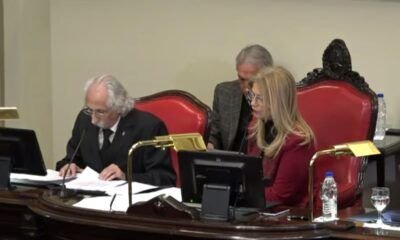
 POLITICA2 días ago
POLITICA2 días agoCon un desempate de Magario, el Senado bonaerense aprobó la reelección indefinida de los legisladores provinciales































